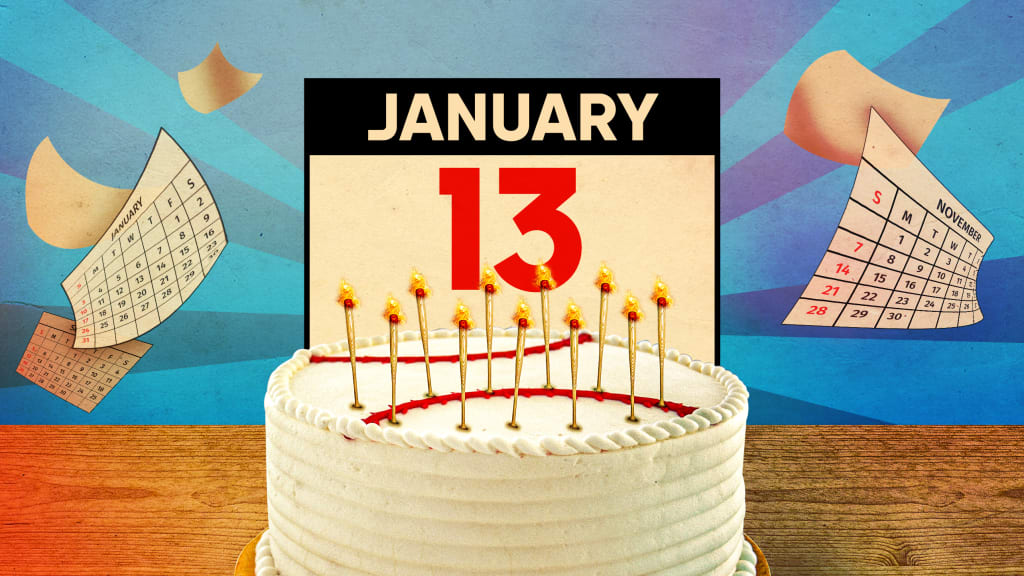
Who are the best players born on each day of the year? We have a list for every day on the calendar.
Here¡¯s a subjective ranking of the top five for Jan. 13.
1) Kevin Mitchell (1962)
Everyone remembers Mookie Wilson¡¯s ground ball that won Game 6 of the 1986 World Series for the Mets when it got through the legs of Red Sox first baseman Bill Buckner. But Wilson might not have gotten that chance if not for Mitchell, who followed Gary Carter¡¯s rally-starting two-out single with one of his own, then went first-to-third on a Ray Knight single and scored the tying run on a passed ball. ¡°The key to the game was Mitch¡¯s baserunning,¡± none other than Keith Hernandez, who would become the Mets¡¯ captain in 1987, said at the time. ¡°He went to third base on that soft hit and scored on the passed ball. Mitch set up the inning.¡±
That would be Mitchell¡¯s last contribution to the Mets; he went 0-for-2 in the Game 7 win and was traded to his hometown Padres in the offseason. After just half a season, San Diego sent him north to the Giants in July 1987, and it was with San Francisco that he truly etched his name in baseball lore two years later. First, there was the catch. Let¡¯s watch it again:
That grab on April 26 was the just the appetizer to Mitchell¡¯s NL MVP campaign. He hit .291/.388/.635, his slugging and 1.023 OPS leading the Major Leagues. He also led baseball in home runs (47), RBIs (125), OPS+ (192), total bases (345) and intentional walks (32); at the end of the season, he received 20 of the 24 first-place votes in MVP balloting. He followed that up with 35 home runs in 1990, but injuries limited him to 113 games in ¡¯91 (though he still topped MLB with 109 homers over those three seasons). Mitchell managed to hang on for six more seasons in Seattle, Cincinnati, Boston, Cleveland and Oakland, though he never again topped 100 games played. He¡¯s the only All-Star (1989, ¡¯90) born on this day.
2) Bob Forsch (1950)
The Cardinals have thrown nine no-hitters entering 2023, and though their all-time roster features Hall of Famers like Bob Gibson, Dizzy Dean, Jesse Haines and Dazzy Vance, Forsch is the only one to throw two of those no-hitters. The first came on April 16, 1978, a 5-0 win over the Phillies. Coming off his only 20-win season in ¡¯77, Forsch opened his follow-up campaign with three straight wins that culminated in a two-walk, three-strikeout gem in which he faced 29 batters. When his brother Ken pitched a no-hitter for the Astros a year later, they became the first pair of brothers to accomplish the feat.
On Sept. 26, 1983, Bob Forsch did it again, holding an Expos lineup that included future Hall of Famers Tim Raines, Andre Dawson and Gary Carter hitless. A hit-by-pitch and an error in the second inning were all that kept him from a perfect game. What¡¯s more, Forsch¡¯s two no-hitters are the only ones thrown by the Cardinals in St. Louis since 1924.
3) Fred Schulte (1901)
In 1927, the year of Babe Ruth¡¯s 60 home runs and the Murderers' Row Yankees, Schulte, a 26-year-old rookie on the St. Louis Browns, received MVP votes in the American League after hitting .317/.383/.503 with three home runs and 34 RBIs in just 60 games. OK, so the MVP voting was different then: Previous winners were ineligible (Ruth had won in 1924) and each team had to be represented. (Lou Gehrig was the winner.) And sure, Schulte was one of four Browns who received votes, but there must have been something about his 60 hits that caught the eye of the baseball writers who voted for him. That was the start of a solid 11-year career for the 6-foot-1, 183-pound center fielder from Belvidere, Ill., who also played for the Senators and Pirates. He retired in ¡¯37 with a career bWAR of 16.4, then went on to manage and coach in the Minor Leagues before becoming a scout until 1964.
4) Akinori Otsuka (1972)
After pitching seven years in his native Japan, Otsuka was posted and signed with the Padres, finishing third in NL Rookie of the Year voting in 2004. He went 7-2 with a 1.75 ERA (224 ERA+, 2.82 FIP, 1.06 WHIP) and two saves in 73 games, all out of the bullpen. His performance fell off the next year (2-8, 3.59 ERA, 108 ERA+, 3.45 FIP, 1.42 WHIP) and in the offseason, he was one of three players traded to Texas on Jan. 6, 2006, in exchange for first baseman Adri¨¢n Gonz¨¢lez, pitcher Chris Young and outfielder Terrmel Sledge. The Rangers made Otsuka their closer, and he saved 32 games. He was also Japan¡¯s relief ace in the ¡¯06 World Baseball Classic, pitching in a tournament-high five games (5 2/3 innings, 2 hits, 2 walks, 8 strikeouts). In 2007, an elbow injury ended his season with the Rangers on July 1, and he retired after being non-tendered in the offseason.
5) Elmer Dessens (1971)
With a career WAR of 11.8, Dessens is the only other player born on this date above 10. He pitched 14 seasons for the Pirates, Reds, D-backs, Dodgers, Royals, Brewers, Rockies, Braves and Mets. Used mostly in relief (52-64 with a 4.44 ERA for his career), the six-foot right-hander from Hermosillo, Mexico, did go 25-30 (with a 4.20 ERA) as a starter from 2001-03. He also served as captain of Mexico¡¯s World Baseball Classic team in 2009, going 1-0 with a 1.35 ERA.
Others of note:
Goat Anderson (1880)
One of two players known to have this nickname, Edward John Anderson was the G.O.A.T. of Goats: He played 127 games in his lone season with the Pirates in 1907, but that was still 126 more games than Goat Cochran's career, which began and ended on Aug. 25, 1915.
Bunny Hearn (1904)
Believe it or not, Elmer Lafayette Hearn, a left-hander who pitched for the Boston Braves from 1926-29 (just 59 total games) was the second Bunny Hearn in AL/NL history. The first -- Charles Bunn Hearn -- was also a southpaw hurler from 1910-20, likely leading to the younger pitcher¡¯s nickname.
Charlie Wilson (1905)
Charlie Wilson¡¯s WAR was just -0.5 in four years as a journeyman shortstop. But his influence may have still been felt more than 50 years after his final game in 1935. Wilson¡¯s nickname, ¡°Swamp Baby,¡± could have been derived from a prank he pulled one day when he didn¡¯t want to practice: He flooded the field so that it became unplayable, a stunt that may have been one of the influences for the scene in "Bull Durham" when Crash Davis gets his team a ¡°rainout¡± by turning on the sprinklers.
Mike Tyson (1950)
No, he didn¡¯t suit up for the Mets, but his nickname, according to Baseball-Reference, was Rocky, a sobriquet he picked up in college in the early ¡¯70s -- before the Oscar-winning movie came out. The origin may be his hometown: Rocky Mount, N.C. According to an article in the St. Louis Post-Dispatch in 1973, he wasn¡¯t a fan of the name.
Billy Jo Robidoux (1964)
His entire six-year career just about covers a full season: 547 plate appearances (albeit in 173 games), 468 at-bats, a .209/.313/.286 line for the Brewers, White Sox and Red Sox from 1985-90. But "Billy Jo Robidoux" is just fun to say.
Heath Hembree (1989)
A career-long reliever who pitched for the Pirates and Dodgers in 2022, Hembree was traded from the Giants to the Red Sox in 2014, when San Francisco picked up Jake Peavy on its way to its third World Series title in five seasons. In 2018, Hembree appeared in 67 games and won a ring of his own with Boston.
Want to see more baseball birthdays for Jan. 13? Find the complete list on Baseball Reference.
